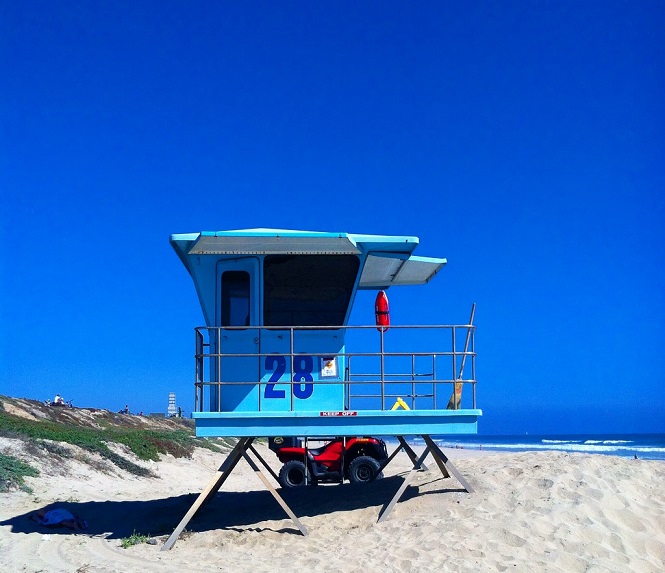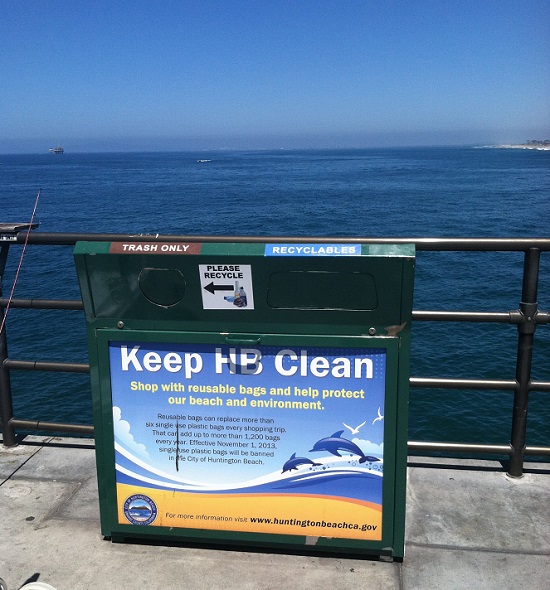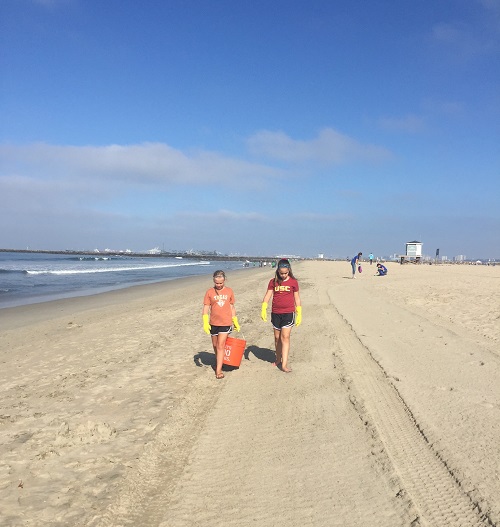 Huntington Beach, California, has a rich history, which began, not with surfing, as its Surf City, USA, nickname may suggest, but with oil. The growth of the city coincided with the oil boom in 1920, at which time the city was the largest known California oil deposit. Then in 1925, Duke Kahanamoku brought the sport of surfing to Huntington Beach and Southern California. In 2005, the USA Surf Team adopted Huntington Beach as its official home and the Association of Surfing Professionals-North America moved to the city.
I recently visited the city during Surf Week, an annual U.S. Open of Surfing event that takes place in Huntington Beach. The city and its’ residents have a respect for the environment that is pervasive in everything the city has to offer. From the beautiful Huntington Beach Pier with plenty of spots to drop off recycling to local restaurants that serve local and organic menu items. This city is beautifully located on the Pacific Ocean and intends to keep the area beautiful for future tourists and residents.
Huntington Beach, California, has a rich history, which began, not with surfing, as its Surf City, USA, nickname may suggest, but with oil. The growth of the city coincided with the oil boom in 1920, at which time the city was the largest known California oil deposit. Then in 1925, Duke Kahanamoku brought the sport of surfing to Huntington Beach and Southern California. In 2005, the USA Surf Team adopted Huntington Beach as its official home and the Association of Surfing Professionals-North America moved to the city.
I recently visited the city during Surf Week, an annual U.S. Open of Surfing event that takes place in Huntington Beach. The city and its’ residents have a respect for the environment that is pervasive in everything the city has to offer. From the beautiful Huntington Beach Pier with plenty of spots to drop off recycling to local restaurants that serve local and organic menu items. This city is beautifully located on the Pacific Ocean and intends to keep the area beautiful for future tourists and residents.
 What I didn’t know when visiting was that Orange County, where Huntington Beach is located, has three landfill sites. Factoring in waste and recycling rates, the landfills are expected to remain viable through 2065, according to Rainbow Recycling Services. At that time, there will be no other alternative locations for landfill sites in the county so the waste will have to be trucked outside of Orange County, which will cause the costs of waste removal to go up. This is one of the reasons the City of Huntington Beach is finding new ways to expand its recycling efforts.
What I didn’t know when visiting was that Orange County, where Huntington Beach is located, has three landfill sites. Factoring in waste and recycling rates, the landfills are expected to remain viable through 2065, according to Rainbow Recycling Services. At that time, there will be no other alternative locations for landfill sites in the county so the waste will have to be trucked outside of Orange County, which will cause the costs of waste removal to go up. This is one of the reasons the City of Huntington Beach is finding new ways to expand its recycling efforts.

Inside a Sustainable City
- The city offers single stream recycling to the residents of Huntington Beach. Single-family homes receive three 95-gallon carts – one brown cart for garbage, one blue cart for recyclables and one green cart for yard waste (plant waste, grass cuttings, tree trimmings and floral arrangements).
- The carts are collected using vehicles powered by clean compressed natural gas (CNG).
- Not only can residents recycle paper, cardboard, chipboard, plastic, glass, aluminum and so on with their curbside recycling, they can also recycle Styrofoam, coat hangers and laundry baskets.
- Huntington Beach is committed to encouraging bicycling as a means of transportation and recreation. In 2010, the city received national recognition as a Bicycle Friendly Community by the League of American Bicyclists.
- The Huntington Beach/Seal Beach chapter of the Surfrider Foundation sponsors 20-plus year-round beach cleanup events in the Huntington Beach area.
- In the 1970s, the city created one of the first municipal environmental boards in the state of California. The board, now named the Huntington Beach Environmental Board, started the city’s first recycling program (also in the 1970s), and in 2006, Huntington Beach achieved the state’s highest diversion rate.
- Huntington Beach has been honored with the Tree City USA designation for eight years in a row, encouraging residents to plant large canopy shade trees as a way to conserve energy and reduce energy costs.
- In 2001, Huntington Beach retrofitted all of its traffic lights, downtown and city parking facilities to more energy efficient LED lighting.
- The city uses less water today than it did in the 1990s, despite an 11 percent increase in its population and visitors to the city.
To find out more about the City of Huntington Beach, visit the City’s official website..